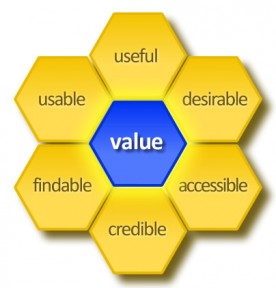Blog: Design Musings and Other Nonsense
We discuss design, business, web products and other miscellany.
Great UX Design is Never Done
As a UX (User Experience) designer, I am often asked how long it will take to create a great user experience on a site (or app, or whatever). I have a feeling that my answer of “well, forever” is not very satisfying. However, there is a reason I answer this question this way.
A lot of times, especially in the business world, tasks are looked at a cost/benefit ratio. As a gross oversimplification, new projects are judged based on how long they will take, how much they will cost, and what the company can expect to get in return. The obvious logic behind this, of course, is to make sure the allocation of resources will yield a net gain in the end.
The problem with throwing around words like “great” though is that, often, “great” can take forever. “Good” UX is easy to predict. There is A LOT of “good” UX out there, and most designers who know what they are doing can nail “good” UX without breaking much of a sweat. For most companies, “good” is good enough and it is easy to just stop there.
Great, however, is often a big unknown. Great is intangible. Great is often one of those things you have to see and/or experience to really know what it is. And further, “great” according to whom? To your audience? To you? To your management team? And, how do you measure “great”?
To me, “great” UX is really more of a mindset, a will, than anything else. In my experience, “great” user experiences typically flow out of a person, or a group, who make great UX their mission. It is a very high, if not the highest, priority. These people or organizations truly put the user/customer first, and continue to polish the experience every day. Great UX is not something you do to get it over with, great UX is something you do, and choose to keep doing, because anything less would be unacceptable.
Great UX is a process, not a destination. Typically, great UX design flows out of iterating a new design, in front of real users, over and over again. Start with a hunch, maybe some data, design, deploy, measure, and repeat. And, by the time a product/site/app/process has been polished to the point of UX nirvana, it is time to start a new version (or, at the very least, an extension). It is a never-ending cycle, always chasing excellence around wherever it may be hiding.
There is a trap here, though. That is, it is important to be changing things because they need to be changed, not just to change them. Users get pissed when you go about fiddling with something they already liked and knew how to use.
Especially for entrepreneurs, it can be easy to see the world in the terms of deficiencies, the things it lacks. It is not uncommon to go looking for problems that don’t really exist, or start fixing problems you won’t (really) have for five years. A good portion of UX design is the discipline to truly keep it about the user, solving problems they actually have. When you keep things in these terms, you will know when you are done and your efforts would be best spent fixing other problems (rather than “fixing” phantom problems that only you have).
I get inspired by great user experiences. I appreciate the effort that went in to crafting an elegant, user-centric experience, mostly because I know how hard this is. It does not happen automatically, but to those with the will, dedication, and dare I say humility, it is attainable.
Photo Credit: Melodies in Marketing and Peter Morville of Semantic Studios

